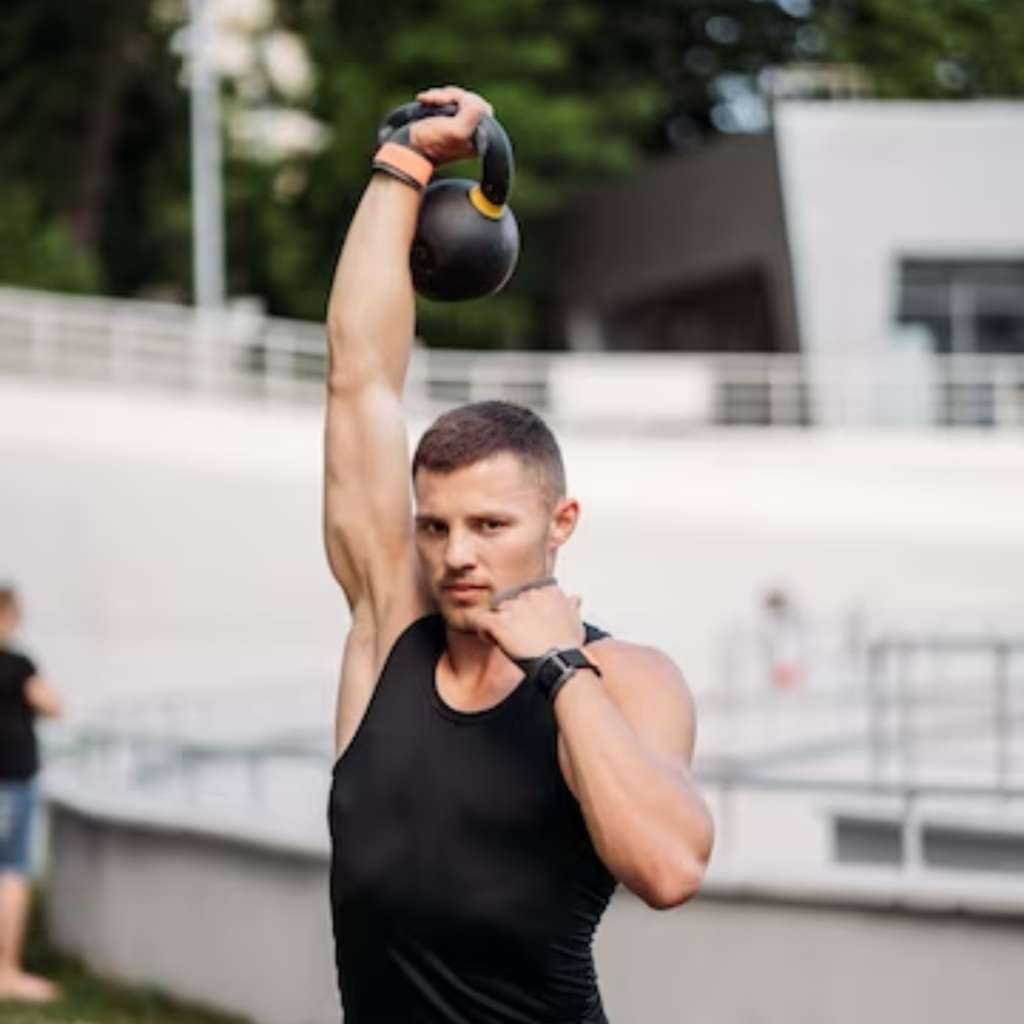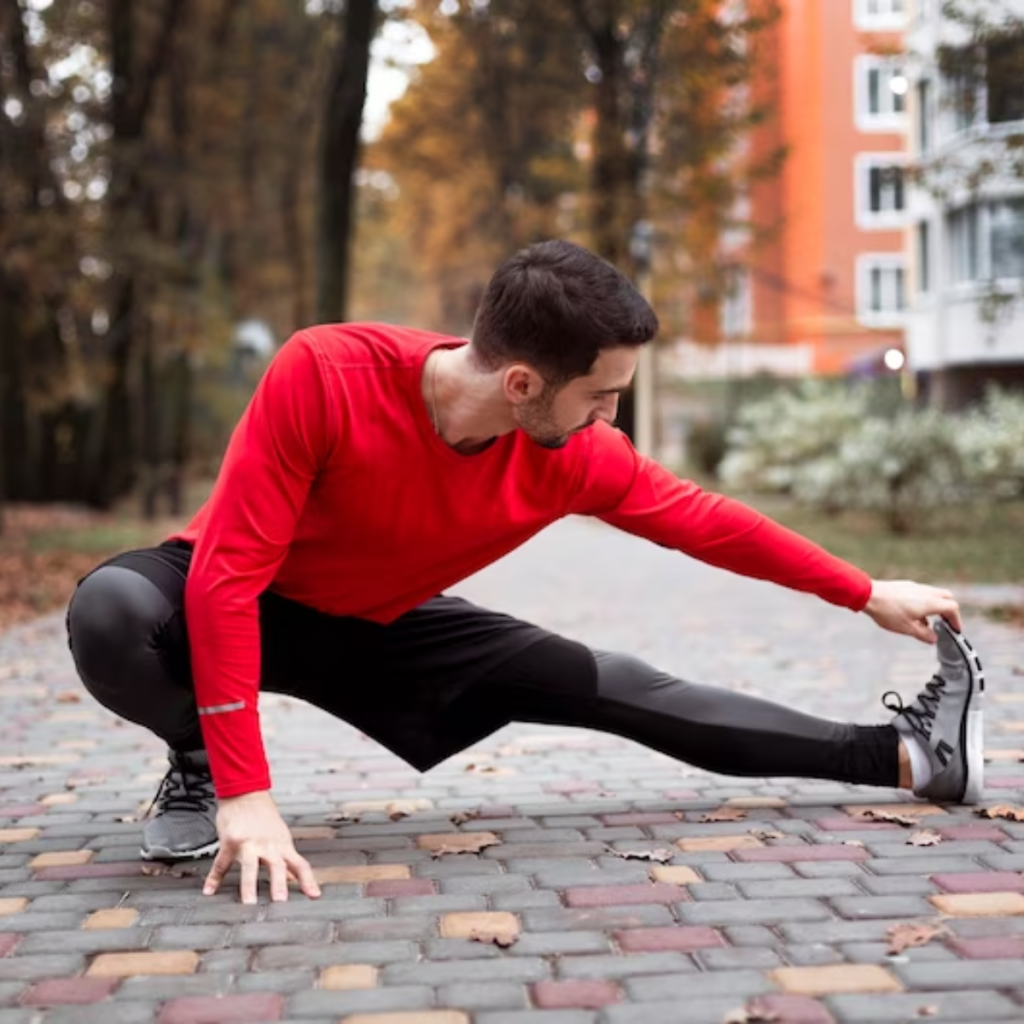Master the Kettlebell Windmill Exercise: A Step-by-Step Guide
September 18, 2023

Are you ready to unlock the power of the Kettlebell Windmill? Get ready to swing into action with this step-by-step guide to mastering the ultimate exercise for strength, mobility, and overall fitness. In this article, we will delve deep into the technique, benefits, targeted muscles, variations, weight selection, and stretching techniques for the Kettlebell Windmill. So grab your kettlebell and let's get started!

Unveiling the Kettlebell Windmill Technique
Before we dive into the details, it's important to understand the basic technique of the Kettlebell Windmill. This exercise combines strength, flexibility, and stability, making it a true full-body workout. The key is to maintain a strong core, keep your shoulders engaged, and move with fluidity. Let's break it down step by step.
The Kettlebell Windmill is a dynamic exercise that not only targets your core, but also engages your shoulders, hips, and legs. It's a great way to improve your overall strength and flexibility, while also challenging your balance and coordination.
- Starting Position: Stand with your feet slightly wider than shoulder-width apart, toes pointed forward. This wide stance provides a stable base for the exercise. Hold the kettlebell in your right hand with your arm fully extended overhead, palm facing inward. The weight of the kettlebell should be evenly distributed in your hand, allowing for a controlled movement.
- Foot Position: Rotate your left foot outwards about 45 degrees. This external rotation of the foot helps to open up your hips and allows for a deeper range of motion in the exercise. It also helps to engage the muscles of your inner thigh and glutes.
- Hip Hinge: Initiate the movement by hinging at your hips, pushing your hips back and reaching your left hand toward your left foot as you lower your torso. This hip hinge movement is crucial for maintaining proper form and preventing strain on your lower back. It also helps to activate your hamstrings and glutes, which are important for generating power and stability in the exercise.
- Core Engagement: Keep your core tight and your weight in your heels as you lower your torso. Imagine forming a straight line from your fingertips to your left heel. This alignment helps to engage your core muscles, including your abdominals and obliques, which are essential for stabilizing your spine and maintaining balance throughout the movement.
- Upward Movement: Drive through your heels, engaging your glutes and hamstrings to return to the starting position. As you rise up, focus on maintaining a strong core and keeping your shoulders engaged. This upward movement should be controlled and fluid, allowing for a smooth transition from one side to the other.
- Switch Sides: Repeat the exercise on the opposite side by switching the kettlebell to your left hand. This symmetrical movement helps to ensure balanced strength and flexibility on both sides of your body. It also challenges your coordination and proprioception, as you have to adjust to the movement on the opposite side.
As you become more comfortable with the Kettlebell Windmill, you can gradually increase the weight of the kettlebell to further challenge your strength and stability. Remember to always listen to your body and work within your own limits. With consistent practice, you'll be able to master this dynamic exercise and reap the many benefits it has to offer.
Mastering the Kettlebell Windmill Exercise
Now that you have the basic technique down, it's time to advance your skills and take your Kettlebell Windmill to the next level. Practice these tips to fine-tune your form:
The Kettlebell Windmill exercise is a dynamic movement that engages multiple muscle groups, providing a full-body workout. It not only strengthens your core, but also improves flexibility and stability. By incorporating these additional tips into your routine, you can maximize the benefits of this exercise and enhance your overall fitness level.
- Focus on Your Shoulders: Keep your shoulders packed and engaged throughout the entire movement. This will provide stability and prevent strain. Imagine your shoulder blades sliding down your back as you perform the Windmill. By maintaining proper shoulder alignment, you can optimize the effectiveness of the exercise and minimize the risk of injury.
- Breathe: Don't forget to breathe! Inhale as you lower into the Windmill and exhale as you come back up. Deep, controlled breathing not only helps you maintain focus and concentration, but also ensures that your muscles receive an adequate oxygen supply. This can enhance your endurance and help you perform the exercise with greater ease.
- Start with Lighter Weights: It's important to start with a kettlebell weight that's manageable for your fitness level. This will help you perfect your form and avoid injury. Gradually increase the weight as you become more comfortable and confident in your technique. Remember, it's better to start light and progress gradually than to risk straining your muscles or joints with a weight that's too heavy.
- Practice Regularly: Consistency is key when it comes to mastering any exercise. Set aside dedicated time each week to practice the Kettlebell Windmill and watch your progress soar. As you become more familiar with the movement pattern and build strength, you can challenge yourself by incorporating variations or increasing the number of repetitions. Regular practice will not only improve your technique, but also enhance your overall fitness level.
Remember, mastering the Kettlebell Windmill is a journey that requires patience and dedication. By following these tips and incorporating them into your training routine, you can continue to progress and reap the numerous benefits this exercise has to offer. So grab your kettlebell, focus on your form, and let the windmill take you to new heights of strength and fitness!
Unlocking the Benefits of Kettlebell Windmill Training
Now let's explore the incredible benefits of incorporating the Kettlebell Windmill into your fitness routine. From enhancing lateral strength and rotation to improving shoulder function and slowing down the aging process, this exercise has something for everyone.
Enhancing Lateral Strength and Mobility with the Kettlebell Windmill
The Kettlebell Windmill is a fantastic exercise for improving lateral strength and mobility. By targeting your core, hips, and shoulders, it helps you build stability and range of motion in both directions, making everyday activities and sports movements easier and more efficient.
Amplifying Rotation with the Kettlebell Windmill
If you're looking to turn up the dial on your rotational power, the Kettlebell Windmill is your secret weapon. By strengthening your obliques, glutes, and shoulders, it enhances your ability to generate force and power through rotational movements, improving performance in sports such as golf, tennis, and baseball.
Improving Shoulder Function through the Kettlebell Windmill
Tired of nagging shoulder issues? The Kettlebell Windmill can help. By improving scapular stability, mobility, and overall shoulder health, it's a game-changer for anyone looking to prevent or rehabilitate shoulder injuries. Remember to always start with light weights and focus on form to avoid strain.
Slowing Down the Aging Process with the Kettlebell Windmill
Who doesn't want to stay young and vibrant? The Kettlebell Windmill can help you do just that. By improving your overall strength, flexibility, and coordination, it keeps your body functioning at its peak, helping you maintain an active and fulfilling lifestyle as you age.
Targeted Muscles in the Kettlebell Windmill
The Kettlebell Windmill is a multi-joint exercise that engages several major muscle groups. Here are the key muscles targeted:
- Core: The Kettlebell Windmill is an incredible core workout, targeting your abs, obliques, and lower back muscles.
- Hips and Glutes: As you hip hinge and lower into the exercise, your glutes and hip muscles work hard to stabilize and generate power.
- Shoulders and Upper Back: Your shoulders, upper back, and scapular stabilizers are engaged throughout the movement, helping you maintain proper form and stability.
- Hamstrings: The Kettlebell Windmill places a demand on your hamstring muscles as you lower your torso and work against gravity.
Exploring Different Variations of the Kettlebell Windmill
Variety is the spice of life, and the same goes for your workout routine. Keep things fresh and exciting by incorporating different variations of the Kettlebell Windmill. Here are a few to get you started:
Bent-Leg Windmill: A Variation for Added Challenge
If you're looking to level up your Kettlebell Windmill, try the Bent-Leg Windmill variation. By bending your knees slightly, you increase the demand on your core and hip muscles, taking your workout to a whole new level.
Bent-Arm Windmill: Enhancing Core Engagement
For an extra challenge and increased core engagement, try the Bent-Arm Windmill. Instead of fully extending your arm overhead, keep a slight bend in your elbow throughout the exercise. This variation strengthens your core and shoulder stability even more.
Kettlebell Windmill to a Block: Taking It to the Next Level
If you're ready to take things to the next level, try performing the Kettlebell Windmill with your back foot elevated on a sturdy block or step. This increased range of motion intensifies the exercise, challenging your core, shoulders, hips, and balance all at once.
Half-Kneeling Kettlebell Windmill: Building Stability and Balance
The Half-Kneeling Kettlebell Windmill is a great variation for building stability and balance. Get into a half-kneeling position with your back knee on the ground and perform the Windmill as usual with the kettlebell in your overhead arm. This variation forces you to stabilize your core and engage your glutes, enhancing your overall balance and control.
Choosing the Right Kettlebell Weight for Windmill Training
Now that you're familiar with the technique and variations of the Kettlebell Windmill, it's important to choose the appropriate kettlebell weight for your training. Here are some tips to help you make the right selection:
- Start Light: If you're new to the Kettlebell Windmill, start with a lighter weight that allows you to focus on form and technique. Remember, it's better to go lighter and maintain proper form than to risk injury with a heavier weight.
- Gradually Increase: As you become more comfortable with the exercise and your form improves, you can gradually increase the weight of your kettlebell. Challenge yourself, but always prioritize safety and technique.
- Listen to Your Body: Pay attention to how your body feels during and after the workout. If you're experiencing pain or discomfort, consider decreasing the weight or seeking guidance from a qualified fitness professional.
Preparing Your Body with Effective Stretching Techniques
Before you jump into your Kettlebell Windmill training, it's essential to properly warm up and prepare your body. Incorporate these effective stretching techniques into your routine to optimize your performance and prevent injuries:

Side Hip Root: A Stretch to Loosen Up the Hips
The Side Hip Root stretch is an excellent way to loosen up your hip muscles and improve hip mobility, which is crucial for maintaining proper form in the Kettlebell Windmill.
Start by standing with your feet hip-width apart. Cross your right ankle over your left knee and lower into a squat position, keeping your chest lifted. Place your hands on your hips and gently press your right knee outwards, feeling a stretch in your right hip. Hold for 20-30 seconds, then switch sides.
Repeat this stretch several times before each Kettlebell Windmill session to enhance your range of motion and reduce the risk of hip strain.
Congratulations! You are now armed with all the knowledge and techniques to master the Kettlebell Windmill exercise. Remember, practice makes perfect, so make it a regular part of your fitness routine and watch your strength, mobility, and overall fitness soar. Happy Windmilling!

 Back to Blog
Back to Blog